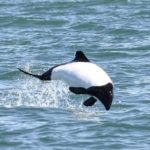Whats is photobiology?

Photobiology is the science that studies the effects of solar radiation on living creatures.
The Sun is the main factor for life development in our planet. The Sun emits energy (as electromagnetic radiation) which allows chlorophyll-bearing organisms like plants, some algae and some bacteria to produce the fundamental chemical energy to carry out their own vital processes. By mean of this process, called photosynthesis, these organisms become the first link in the food web.
Solar radiation is also a major factor for the regulation of natural cycles, as seasons or day / night, latitudinal gradients and height of many terrestrial plants. However, this radiation that allows life on Earth maybe harmful sometimes, mainly due to the ultraviolet radiation (UVR) component of sunlight.
Since the discovering of the ozone “hole” on Antarctica, much research has been done in UVR photobiology. We know now that UVR is one of the main factors which influence several aspects of organisms such as distribution, behavior and other adaptations in different ecosystems.
What are the applications?
Results of photobiology research can be applied in different fields, like human health, aquaculture, resistance of materials in outdoor conditions, etc. It also provides practical and conceptual tools for the evaluation of potential effects of global change on natural communities.
Photobiology provides valuable tools that can be applied on long-term studies, such as seasonal or daily cycles. It is also very useful in studies of short- and medium-term, more immediate for society, such as the effects caused by men, like the ozone “hole” in Antarctica, or the “mini” holes in the Northern Hemisphere.
It also helps to understand the interaction of different phenomena in global change, such as ozone decrease, increase of UVR, carbon dioxide or temperature, among other processes.
What is the scope of photobiology?
La Fotobiología es una rama de la Biología. Sin embargo, a menudo utilizamos muchos conceptos básicos del campo de la Física, referidos principalmente a las características y tipos de radiación electromagnética, y de la Química, referidos a la interacción de las estructuras químicas con las distintas radiaciones electromagnéticas.
What do I need to be a photobiologist?
Usually a photobiologist has studies or background in Biological Sciences or focused in subjects akin to Biology. Basic knowledge of Physics, Chemistry and Math is also recommended.
What kind of work is carried out?
Activities at EFPU have a strong emphasis on experimental activities. Considerable time is spent in writing projects and planning/performing activities related to experiments and sampling, most of the time in parallel with data analysis and papers writing. These are then published in renowned international scientific journals and books.
The experiments can take place in culture chambers (artificial radiation and controlled conditions), open air tanks (natural radiation and controlled conditions), or “in situ” (natural radiation and less controlled conditions).
In our experiments we also need to measure variables such as radiation intensity, daylight length, etc. to give a proper context to the results. For example, air and underwater radiation are very important in order to understand the ambient light of organisms being studied. These measurements are usually taken from a boat with a submergible sensor.
Therefore the job implies desk work (use of computer and specific instruments), laboratory and field work (research campaign trips, embarkations, on-board experiments and extraction of samples from lakes and the sea).